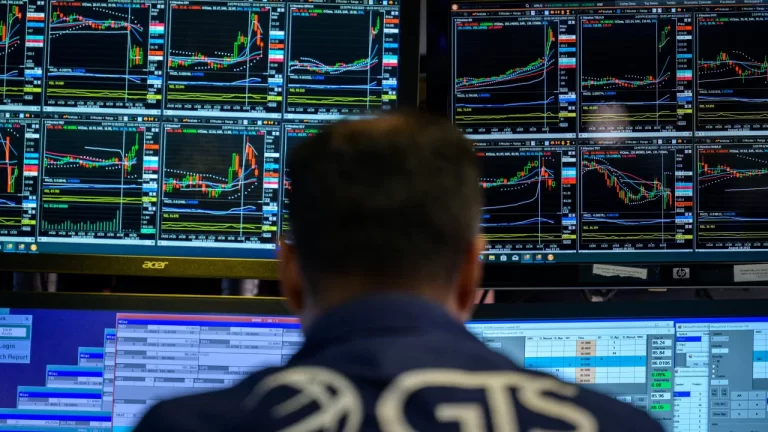About 300 million full-time jobs across the globe could be lost (or greatly diminished) due to the recent boom in artificial intelligence, Goldman Sachs estimates.
Some traders are betting on that AI boom. And they’re starting to make decent returns, too.
What’s happening: Shares of US chipmaker Nvidia (NVDA) are up a jaw-dropping 234% this year. Alphabet (GOOGL) is up 53% and Microsoft (MSFT) is up about 37%. That’s no coincidence. AI stocks are soaring — the tech-heavy Nasdaq Composite is up by about 33% this year.
But what does it really mean to invest in an AI company? Some would say it’s an investment in innovation and productivity. Others might argue that those are code words for replacing jobs with advanced technology.
Around two thirds of Americans are worried about artificial intelligence taking their jobs, according to a recent Morning Consult poll. And with good reason: About a fifth of all US workers have jobs in which the most important activities may be either replaced or assisted by AI, according to Pew.
What it means: The truth is that labor is expensive. And it’s getting more expensive.
While inflation in the United States has come down and other data points to a cooling economy, the labor market has remained remarkably resilient.
That’s a big deal to Federal Reserve officials, who have spoken publicly about their fears of a wage-price spiral — the feedback loop that drives inflation higher as people make more money and go out and spend it. It could also be bad news for shareholders.
Labor costs increased by 9% year over year for S&P 500 companies last quarter and were equal to about 13% of revenues on average, Goldman Sachs analysts wrote in a recent report. They don’t see those numbers easing anytime soon.
Not all companies are affected equally, found Goldman analyst Jenny Ma and her team.
Still, earnings for the median S&P 500 stock could increase by 18% if companies fully automated roles that can be performed by AI, replacing the wages and salaries of those employees, Goldman reported. US companies do not typically disclose labor costs, but Goldman analyzed the wage expense for each company by compiling data on the number of each company’s employees and the compensation of the median employee.
Betting against humans: Goldman has created an index that includes the companies in the S&P 500 with the lowest labor costs compared to revenue — Live Nation (LVY), Coca-Cola (KO), Tesla (TSLA), Nike (NKE), Netflix (NFLX) and Apple (AAPL) are among the 50 companies on the list.
For most of the year, they found, the basket underperformed the S&P 500 by nine percentage points. But things changed in June. The basket began to do very well and has outperformed the S&P 500 by three percentage points this summer.
“Economic data have consistently surprised to the upside, and with growth remaining resilient investors have shifted their focus to the risk of underlying inflation pressures,” Goldman analysts wrote. These companies present an “attractive opportunity to hedge against this risk of sustained wage pressures and inflation.”
Less exposure to human workers means higher profit margins, basically.
— CutC by cnn.com


